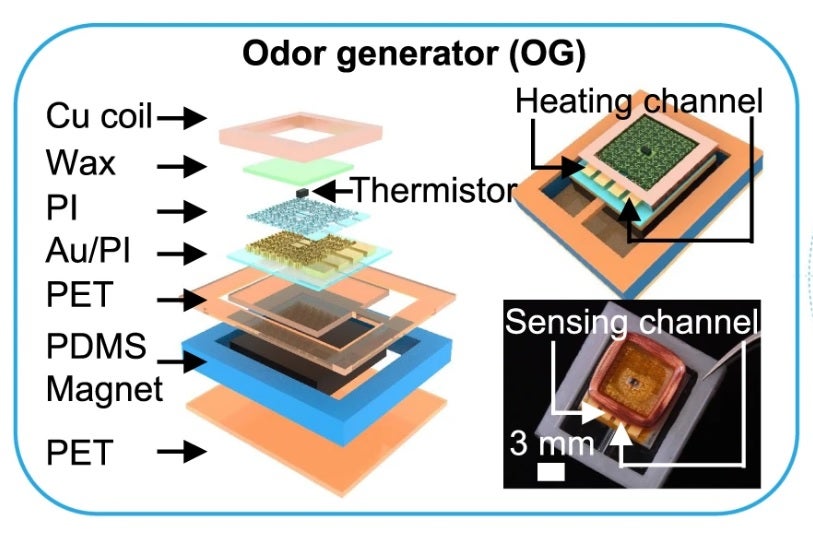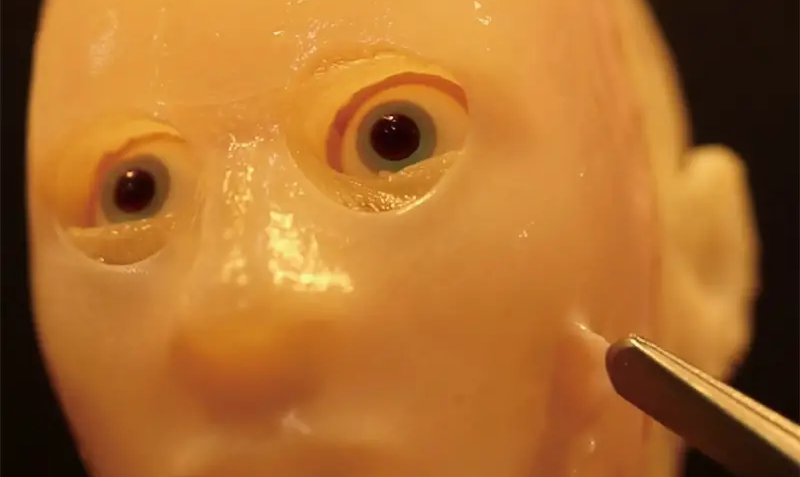Virtual reality experiences depend on goggles and headphones, transporting wearers to new places using sight and sound. Be it a peaceful meadow where the only sounds are birds chirping and the breeze blowing through the grass, or a packed stadium with thousands of fans cheering on a pro football team, what you see and hear are key components of an immersive experience.
This article was written by Vanessa Bates Ramirez and originally published by Singularity Hub.
But they’re not the only ones. Multiple companies are working on haptic devices, like gloves or vests, to add a sense of touch to virtual experiences. And now, researchers are aiming to integrate a fourth sense: smell.
How much more real might that peaceful meadow feel if you could smell the wildflowers and the damp Earth around you? How might the scent of an ocean breeze amplify a VR experience that takes place on a boat or a beach?
Scents have a powerful effect on the brain, eliciting emotions, memories, and sometimes even fight-or-flight responses. You may feel nostalgic with the cologne or perfume a favorite grandparent wore, comforted by a whiff of a favorite food, or extra-alert to your surroundings if it smells like something’s burning.
If proponents’ vision of the metaverse come to pass, integrating scent will help make the virtual world more immersive and realistic. A team at Beihang University in China published a paper in Nature Communications this month describing a system to make it happen. Their wearable interface uses an odor generator to produce specific smells during virtual experiences.
The team created two different versions of the “olfaction interface”: one that users stick onto the patch of skin between their nose and mouth, and another that’s strapped on like a face mask. The interfaces contain odor generators in the form of miniaturized containers of paraffin wax infused with different scents. These can activate individually or be combined to create many unique smells (though the face mask version has much more versatility with 9 odor generators, while the on-skin version only has 2).
The scents reach the device’s wearer via an actuator and heat source that starts to melt the wax, causing it to release its scent, like a candle. The researchers claim it only takes 1.44 seconds for a scent to be generated and reach the device wearer’s nose. To make the scent stop or transition to a different one—say you’ve left the meadow and are now walking along a paved road upon which there’s a chocolate factory (mmmm)—a copper coil kicks a magnet to cover the wax and cool it down.

It may make users nervous to have a device on their face that gets hot enough to melt wax. The researchers say their interface won’t burn wearers—or even come close to doing so—thanks to an open design that ventilates warm air. There’s also a piece of silicone built in to create a barrier between the interface and wearers’ skin.
In a test with 11 volunteers, the on-skin interface reached a temperature of 90° F; that’s lower than the human body temperature, but not exactly cool and comfortable. The team says they’re working on solutions to make the interface run at lower temperatures. They also have yet to figure out how to program the odor generators in a way that would seamlessly integrate with VR headsets, and release the relevant scents at appropriate times.
Nonetheless, their design is a step forward. “This is quite an exciting development,” said Jas Brooks, a PhD candidate at the University of Chicago’s Human-Computer Integration Lab who has studied chemical interfaces and smell, who was not involved in the study. “It’s tackling a core problem with smell in VR: How do we miniaturize this, make it not messy, and not use liquid?”
Imagine wearing a scent-releasing device while watching The Great British Baking Show or Top Chef. If those shows were addicting (and hunger-inducing) to begin with, being able to smell the cooks’ and bakers’ creations might make us all run out to buy the closest match we can find—or the ingredients to make it ourselves.
That brings us to the final sense that may eventually be added to virtual reality: taste.





